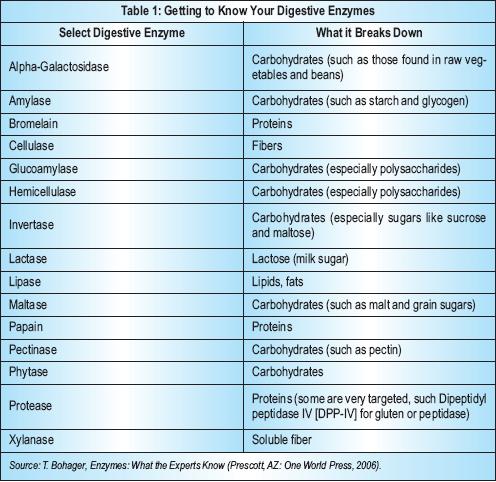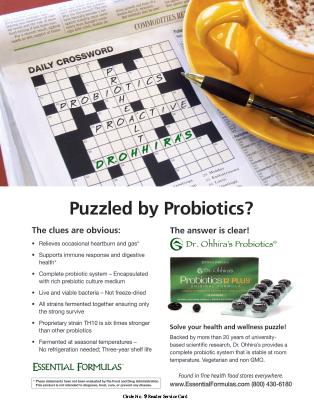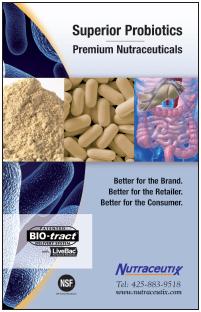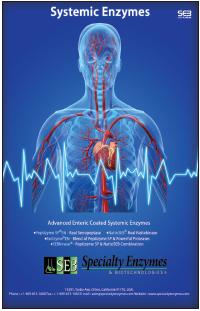Let’s take a trip to digestion utopia for a moment. You eat an enzyme-rich meal and the food travels to your stomach. Here, food enzymes predigest 75% of the meal and stomach acids like hydrochloric acid and pepsin break down a good portion of the rest. The matter then twists and turns through your small intestine, which neutralizes the acids and extracts a host of great nutrients; this process is aided by the liver and the pancreas, which secrete enzymes and bile to breakdown the fat, protein and other material. Then, the large intestines help the waste leave the body uneventfully (1).

Slim chance most Americans are experiencing digestion like this!
Anyone who is rushing through his or her meal, eating enzyme-deficient foods (those heated over 120 degrees Fahrenheit) (2) or taking an acid blocker, is probably not digesting their food exactly as nature intended—and that’s most of us. There’s another point to consider: one’s age. “Typically, the body produces all the enzymes we need when we are young. But, the secretion of saliva, gastric fluid and pancreatic juice decreases as we get older,” states Jay Levy, director of sales, Wakunaga of America Co., Ltd., Mission Viejo, CA.
This leaves the body working overtime to digest its food when it could be doing another job like warding off foreign invaders. Or, other unpleasantries like indigestion, gas, bloating, constipation or acid reflux may occur from poor digestion. Thus, many of your shoppers may want to take a trip to your digestive enzyme supplements section. These supplemental enzymes help us replace the enzymes we need for optimal digestion and overall health.
Calming a Digestive Storm
Before proceeding, it’s important to know exactly what enzymes are and how they work. On the most basic level, these small proteins accelerate or induce a chemical reaction. They play a role in everything from digestive to immune health. With respect to how the body uses them for digestion, enzymes change food particles into chemical structures so they can pass through the
|
Select Digestive Enzyme Supplements Enzymes Inc.: WELLZYMES Digestive Health, Digestive Chewable, Gastric Ease, Carbohydrate Digestion, Protein/Fat Digestion.
|
cell membranes of the digestive tract and into the bloodstream for nourishment, according to Marci Clow, R.D., senior director of product research, Rainbow Light Nutritional Systems, Santa Cruz, CA.
Enzymes are very specific in their action. Because of this, states Maday Labrador, M.S., director of scientific affairs at Enzymedica, Port Charlotte, FL, one enzyme may be better than another for addressing specific digestion issues.
Scott Ravech, CEO of Deerland Enzymes, Kennesaw, GA, speaks to this point when he says that this creates much diversity in the enzyme market, he states, “The broad category of digestion would seem simple in and of itself, but when you start to get down to the details of what specifically the manufacturer is trying to develop, the number of different blends can be infinite.”
Therefore, to help shoppers choose the best supplemental enzyme, savvy retailers should understand the key enzymes in each category and what types of matter they break down.
The first thing to keep in mind is that most enzymes are standardized to just one activity by the manufacturer, but they also may have several “side activities,” says Nena Dockery, scientific and regulatory affairs manager, National Enzyme Company (NEC), Forsyth, MO, which can help manage specific digestive issues.
For example, those who have trouble digesting milk and dairy products may require some targeted support from lactase, the enzyme that digests lactose. According to Angelica Vrablic, Ph.D., nutrition research manager for American Health, Ronkonkoma, NY, this is an important area in the enzyme market. She states, “Enzymes are essential for addressing digestive issues such as lactose intolerance. Lactose intolerance is the inability to digest lactose (milk sugar) in dairy products due to the low activity or complete lack of the lactase enzyme. This is a case where supplementing with an enzyme will provide instant relief.”
Dockery raises the point that this doesn’t mean those with lactose digestion issues should focus on taking just one enzyme. “Most people only consider supplementing with lactase to help manage dairy digestion. However, dairy fat and dairy protein can pose as much of a problem as the dairy sugar. By utilizing specific lipases and proteases that are known to effectively break down, these food components can yield a much more effective product,” she believes.
Another specific consideration are customers who have trouble digesting casein and gluten. Trisha Sugarek, national educator and R&D specialist for Bluebonnet Nutrition Corporation, Sugar Land, TX, offers some insight into gluten intolerance to help us better understand appropriate supplements for addressing this issue. Gluten from grains like wheat, barley and rye cannot be completely digested, she says, and in some people, it induces an immune response with some tell-tale side effects like diarrhea and abdominal pain. Often, these folks are told to avoid gluten altogether. But Sugarek notes, “Revolutionary developments have taken place in the science in the last few years allowing for the development of several enzymes including, aspergillopepsin (ASP), dipeptidyl peptidase IV (DPP-IV) and cysteine endoprotease (EP-B2), all of which have shown some promise to help those who are gluten-sensitive or have wheat allergies.”
Though they don’t appear effective in those with celiac disease, “this research may open the door to future studies and therapies for people afflicted with this autoimmune condition,” Sugarek believes.
One expert noted, however, that proteolytic enzymes cannot completely eliminate gluten intolerance symptoms. Adds Brenda Watson, president and founder of ReNew Life, Palm Harbor, FL, “Even [DPP-IV] is only recommended for accidental occasions of gluten ingestion. The best recommendation for people with gluten intolerance is to avoid gluten altogether.”
For the vast majority of clients, a combination of several enzymes within a high-quality supplement will be the best support for good digestion. According to Kaori Dadgostar, Ph.D., technical specialist for Jarrow Formulas, Los Angeles, CA, “Foods that we consume often contain more than one kind of nutrient and thus, it is important that one has the full complement of enzymes that are important for digestion of sugars, proteins and lipids.”
Such a supplement should also include fiber-digesting enzymes like cellulase, hemicellulase and pectinase. “That’s the one group of enzymes we don’t make on our own. They have to be supplemented or gotten from fresh fruits and vegetables…A good digestive enzyme should have a fiber-digesting enzyme to aid in that process,” states Jeff Thurston, vice president of Master Supplements, Victoria, NM.

Table 1 offers some basic information about select digestive enzymes and their target areas of activity.
Another point to consider is that some enzymes need protection from degradation. One company, Master Supplements, uses a seawood ingredient in the formulation for stability. “It’s part of the powder,” says Thurston. “When the capsule dissolves, the stomach acid starts to leak in. An ingredient, sodium alginate from seaweed, becomes alginic acid in an acid environment. It sequesters and buffers everything that’s inside the alginic acid shell that forms in the stomach. When it gets into the small intestine, the pH goes up, it reverts back to sodium alginate and the enzymes are released. It lets the enzymes go quite deeply into the small intestine,” he explains.
This, Thurston says, is key for getting enzymes to function properly. “The enzymes can do all the breaking down in the world, but if your gut can’t absorb it, it doesn’t do you any good,” he feels.
United Forces or Divide and Conquer?
Once shoppers are familiar with enzyme names, they may discover that some of their favorite multis or probiotic formulas also incorporate enzymes. One may wonder whether enzyme stability and degradation is an issue in these combination formulations.
|
A Closer Look at Acid Blockers |
According to Ravech, the answer is “it depends.” Enzymes and probiotics, he states, are sensitive to certain environments. “In the case of an enzyme, you don’t want a high-moisture, high-temperature or high-humidity environment because this will start to break down its activity and potency. This could also affect shelf life,” he says, adding, “Some enzymes are more robust than others—there’s no single answer to the question.”
But experts agree that if formulated, stored and handled properly, enzyme combination products can be successful. Speaking of her company’s line, Clow states, “We have tested the products and have not seen a significant level of degradation in the enzyme levels….It is all about finding a quality enzyme supplier, and a manufacturer who knows how to work with enzymes.”
In fact, Levy points out that probiotics are a natural companion ingredient for enzymes in digestive wellness formulas. “They work with probiotics to help the body digest food and improve gastrointestinal conditions. Enzymes also work with multivitamins to promote a healthy immune system. It’s a very smart and convenient way to supplement for optimal health,” he believes.
NEC has done some stability testing to investigate this very issue. According to Dockery, most enzymes don’t interact negatively with probiotics, unless moisture is added. Lysozyme is an exception.
Dadgostar issues a warning, however, with regard to probiotic–enzyme combination products: Though more studies are needed for a definitive conclusion, enzymes may reduce the number of probiotics that reach the intestines.
Watson agrees on this point, stating “Some formulas available today combine probiotics with enzymes to be taken simultaneously, but physiologically this doesn’t make sense. Probiotics are living organisms, which means that they are made up of proteins, carbohydrates and fats. Why would you want to take a probiotic with an enzyme, when you risk the very destruction of the probiotics?”
Therefore, if taken separately, one may want to take such formulas at least one to two hours apart, according to one industry insider. Adds Joseph Brasco, M.D., chief medical officer of Garden of Life, West Palm Beach, FL, and author of Restoring Your Digestive Health, “If dosages need to be individualized, it’s better to take them à la carte, especially with a digestive enzyme.”
There are, however, some advanced technologies that help protect bacterial colonies and the co-existing enzymes. Labrador describes one used by her company: “The delivery system, TherActive, ensures the release of the probiotics in the alkaline pH of the lower intestine, delivering healthy bacteria into the intestinal tract, while the enzyme blend starts its digestive work in the stomach.”
For multivitamins, Barbara Braatz, associate brand manager for Schwabe North America, Inc. (owner of Enzymatic Therapy), believes that adding enzymes takes special care: “Enzymes can be tricky to work into formulas because they can be affected by heat and moisture. Moisture in ingredients is not uniform, so it takes careful selection of ingredients to ensure proper distribution so enzymes are not affected. Enzymes can also affect the potency of some vitamins and minerals and vice-versa…That’s why it’s important to have knowledgeable product development scientists, who conduct research and testing to ensure a formulation is safe and effective.”
Before leaving this issue, one must consider whether such combination products are practical from a dosage standpoint. Will the probiotic–enzyme capsule be too big to swallow comfortably? Will it require taking numerous capsules per day? Says Tod Burgess, Deerland Enzymes’ vice president of sales, “We’re able to do well with the
enzyme–probiotic capsules. When you get into the herb–enzyme combinations, the milligram required for the herb may be too large to stay in the standard size capsule.”
Fodder for Enzyme FAQs
One of the trickier supplement labels to understand may very well be digestive enzymes. With terms that are foreign to enzyme novices (like DPP-IV and HUT), the average shopper is likely to have some questions about such supplements before they load up their shopping baskets. Here are some basic facts to help you brush up on your supplemental enzyme trivia.
Q. How long do supplemental digestive enzymes stay in your system?
A. Unlike many vitamins, digestive enzymes don’t build up in your system. According to Watson, “Generally, enzymes will remain active until they have run their course.”

Q. How long before a meal should an enzyme be taken?
A. Everyone’s digestive system varies. But for the most part, enzymes are most effective when you take them at the beginning of a meal (or within 30 minutes before eating). The reason why, says Dockery, is that supplemental enzymes work in the same way that the body’s enzymes do: when food is present. “Once any ingested food is completely broken down, the enzymes are either ‘self-digested’ by other enzymes in the area (proteases), or they are recycled back into the body,” she explains.
If shoppers forget, there’s no need to worry. Since digestion lasts several hours, one can effectively take an enzyme supplement in the middle of a meal, at the end or whenever you remember, says Clow.
Dadgostar backs up this sentiment with a timeline: “One study has shown that digestive enzymes can reach the jejunum and ileum within an hour of ingestion together with a standardized FDA-type food (a small meal that has balanced protein, carbohydrate and fat contents), and the activity lasts for about five hours, decreasing over time. Excess enzymes will be removed with the rest of the stomach and intestinal contents.”
One should note, however, that the length of activity depends on numerous factors such as the type of enzymes taken, the formulation, the delivery method, the meal and the individuals’ health and metabolism.
According to Neil E. Levin, CCN, DANLA, nutrition education manager for NOW Foods, Bloomingdale, IL, betaine hydrochloride (HCl) and pancreatic enzymes are exceptions to the pre-meal rule. “If you take an enzyme containing the acidic betaine HCl, usually it is advised to wait until sometime past the middle of the meal to take it. Otherwise, it may signal the body to produce less of its own, creating a dependency. The same goes for pancreatic enzymes; a feedback mechanism recognizes their presence and signals the body to produce less,” he says.
Q. How quickly will digestive enzymes work?
A. Whereas some supplements don’t take effect for days or even weeks, supplemental enzymes work quickly. Says Levy, “Under optimal conditions, an enzyme can catalyze up to several million reactions per second. Of course, this depends on the amount of the enzyme as well as conditions in the digestive tract (i.e., temperature and pH).” This means most people will feel enzymes working within minutes if they are using it for immediate relief.
Because of this speed, shoppers should know fairly quickly whether a specific enzyme formula is meeting their needs. Therefore, says Labrador of Enzymedica, “The typical experience allows for the consumer to make an educated decision on the continuing use of a particular product within just a few days to a few weeks.”
Q. Why are the units on digestive enzymes so difficult to understand?
A. Each enzyme has a different unit of measure, which reflects its activity or potency. This is different than most other supplements that are measured in weight. Activity can be measured using standard, widely accepted assay compendial methods like the Food Chemicals Codex and the U.S. Pharmacopeia. But, some enzymes are not listed in either compendia, which means that firms must develop their own methodology. “In that case, there isn’t a good way to compare across brands,” states Deerland Enzymes CTO Hilton Dawson. “Those assays may not be comparable.”
Ravech says some companies choose to use their own methods and activity units for a competitive advantage. “Most legitimate manufacturers of enzyme supplements are typically using standardized test methodologies for activities so that people can make that comparison,” he believes. If not, “they are using it more as a marketing tool.”

Don’t make the mistake of misunderstanding what these measurements mean: “They are not, in and of themselves, sufficient to judge the effectiveness of the product. They’re just a way to standardize its potency,” says Dawson. “One unit of one protease isn’t comparable to that same unit of another protease. They serve different functions…If two suppliers have the same product, like papain, and they both measure them the same way, then they’re comparable in terms of potency.”
For more on this important topic, see sidebar, “The Science Behind Enzyme Units.”
Q. What are the benefits of taking vegetarian versus animal-based supplements and vice versa?
A. For some enzymes, there’s no choice. According to Clow, cellulase is only sourced from plants, as are papain (from papayas) and bromelain (from pineapples). Pepsin and trypsin, on the other hand, only occur naturally in animals. Having said that, protease, amylase and lipase can be produced from either animal or plant sources, she explains. Choosing the vegetarian/fungal or an animal variety may simply be a lifestyle choice for some. For others, there’s more to consider.
Experts point to a variety of pros and cons for each class of enzymes. Levy raises the issue that when enzymes come from beef pancreas or hog stomach, there’s a risk of viral infection and contamination. It’s also possible that a low-quality manufacturer may source their product from animals that have been exposed to contaminants like growth hormones and antibiotics. “Plant enzymes, on the other hand, are derived from microorganisms grown on a plant medium,” he says, which are not exposed to such contaminants.
For this very reason, some people with mold or fungus allergies may have trouble taking vegetarian enzymes. Clow explains why: “Plant-sourced enzymes are commonly produced from a non-toxic strain of fungi called Aspergillus. Aspergillus is cultured on food materials such as soybeans or wheat bran to produce several enzymes such as amylase, protease and lipase…Although enzymes derived from Aspergillus are free of any living aspergillus cells, the fact remains that these enzymes are a purified protein faction and may cause a reaction in those people who are sensitive to fungus or molds.”
|
The Science Behind Enzyme Units
|
Another point of differentiation is that vegetarian enzymes may have a broader functionality than the animal enzymes. Says Dan Kaur Weamer, M.S., C.N., nutritionist and director of technical support for Enzymes, Inc., Parkville, MO, vegetarian enzymes remain active over a wide pH range, from the acidic stomach environment to the alkaline small intestine. Therefore, they can be helpful with various stages of digestion.
For instance, they function during the predigestion period, which takes place 45 minutes to one hour after consumption. This may positively affect the next stage of digestion that occurs in the small intestine. The pancreas senses how much food has been previously digested in the stomach and, in response, releases only the enzymes needed to help further the process. “Since vegetarian enzymes work in the stomach...this greater state of digestion is detected by the body as the food moves out of the stomach and into the small intestine, signaling to the body that fewer of its own digestive enzymes are needed. Taking a vegetarian enzyme supplement at the beginning of each meal dramatically reduces the enzyme-producing burden placed on the body by the over-consumption of foods lacking in enzymes,” Weamer says. When less energy and resources are needed to support digestion, they can be redirected elsewhere to help maintain overall health, she believes.
Conversely, animal-based enzymes cannot remain as active in such varying pH environments. To give you a sense of this difference, animal-based pepsin only functions in an acidic range (less than 4 or 5) while pancreatin only functions in a pH environment above 7, says Dockery.
To help animal-based enzymes survive the varying pHs of the digestive tract, most of these supplements are enteric coated for added stability, Sugarek notes. She also points out that animal-based enzymes are somewhat more limited in what foods they help break down: “Enzyme supplements derived from animal products (listed as ‘pancreatin’ on the ingredient label) offer only protease, lipase and amylase activities. Microbial enzymes, on the other hand, offer protease, peptidase, lipase, amylase, glucoamylase, invertase, malt diastase, lactase, alpha-galactosidase, cellulase, hemicellulase, pectinase and phytase activities.” This means that there are many more options for helping consumers break down foods such as proteins, carbohydrates, fats and fiber.
Weamer agrees on this point, adding that most plant-based enzymes can only digest proteins.
According to Braatz, another reasons why shoppers may want to choose animal-based enzymes is that they are “closest to enzymes that are naturally in the digestive tract,” says Braatz, and they to be very cost effective.
Dadgostar cautions us, however, to be careful how we evaluate the two categories of enzymes against each other. “Due to the lack of well-designed comparative studies, it is difficult to compare and contrast these two supplements,” she says, adding, “More studies are required for better understanding of the benefits of these two sources of supplements.”
Q: Some enzyme supplements indicate that you can take extra capsules if necessary. How much is too much with respect to taking too many enzyme capsules?
A: There are several things to consider on this topic. First, potencies vary by manufacturer, so one should always pay attention to a given formula’s specifications. Second, enzymes don’t accumulate in the body. But, under certain circumstances, extra doses can work well for certain people. According to Levy, “Taking extra enzymes to compensate for an illness or a poor diet is a common practice. This typically isn’t a problem since supplemental digestive enzymes are generally safe and do not accumulate in the body.” Third, most important to keep in mind, the amount of product a consumer takes should be discussed with his/her healthcare provider. But, Vrablic offers us a commonsense rule of thumb: “Consumers should not exceed the recommended serving size.”
Watson notes that the dosage may change depending on how much food is being eaten. She states, “If the directions say to take one to three capsules, one capsule may be sufficient for a smaller meal, while three capsules may be needed for a larger meal. However, it is best sometimes to experiment a little in order to determine the most effective dose based on individual need.”
It should be noted, however, that taking too much digestive enzymes can result in gastrointestinal irritation. And one should be extra careful with betaine HCl, a strong acid, according to Levin. “Some people actually need thousands of milligrams of HCl to properly digest their food and may take numerous of these supplements under a physician’s care. This can be dangerous and so plant-sourced enzymes are usually the first choice in correcting digestive insufficiencies. Extra plant-based enzymes are usually safe,” he says.
On the related issue of taking too many enzymes, Thurston theorizes that the body may not produce as much enzymes for itself if it is constantly given supplemental enzymes. “We don’t recommend that people take enzymes at every meal—and this is just my hunch, there’s no scientific evidence behind it. Our bodies can get lazy. If we provide all the enzymes in a pill, what’s the body going to do when the pill doesn’t show up?” he states. “We recommend people take them with the largest meal four to five times per week, though you can take it at every meal.”

Enzymes Beyond Digestion
Though this article is intended to offer information related to digestion, one would be remiss not to at least briefly mention that enzyme supplements can be very important to other aspects of good health. Says Levy, “For many years, the focus of enzyme manufacturers has primarily been on digestion. However, a growing number of studies point to their role in building and maintaining a healthy immune system. Since our busy lifestyles do not always support optimum immunity, a daily dose of digestive enzymes may help ensure good health.”
Plus, proteolytic enzymes, which break down protein, may “help with conditions such as yeast overgrowth (e.g., candidiasis), leaky gut syndrome, autoimmune issues, food sensitivities and celiac disease,” says Watson.
The reason for these broad benefits, says Weamer, are enzymes’ effects on inflammation. She states, “Supplemental proteolytic enzymes…help restore the body’s normal inflammatory processes without disrupting other functions in the body.”
Joint health is an example of this connection. According to Sugarek, bromelain (a natural proteolytic enzyme) inhibits the COX-2 enzyme. “The COX-2 enzyme is involved with the inflammatory process and presents itself as pain, swelling, redness, etc., and research on bromelain for joint health is extensive,” she says. WF
References
1. J. Baron, “Stomach Acid,” Natural Health Newsletter, www.jonbarron.org/weight-loss-program/03-12-2007.php, accessed July 1, 2010.
2. M. Zimmerman and J. Kroner, 7 Syndrome Healing (Nutrition Solution Publications, Chico, CA, 2006).
This series is sponsored by Essential Formulas and Nutraceutix.


Published in WholeFoods Magazine, Aug. 2010 (epub July 22, 2010)










